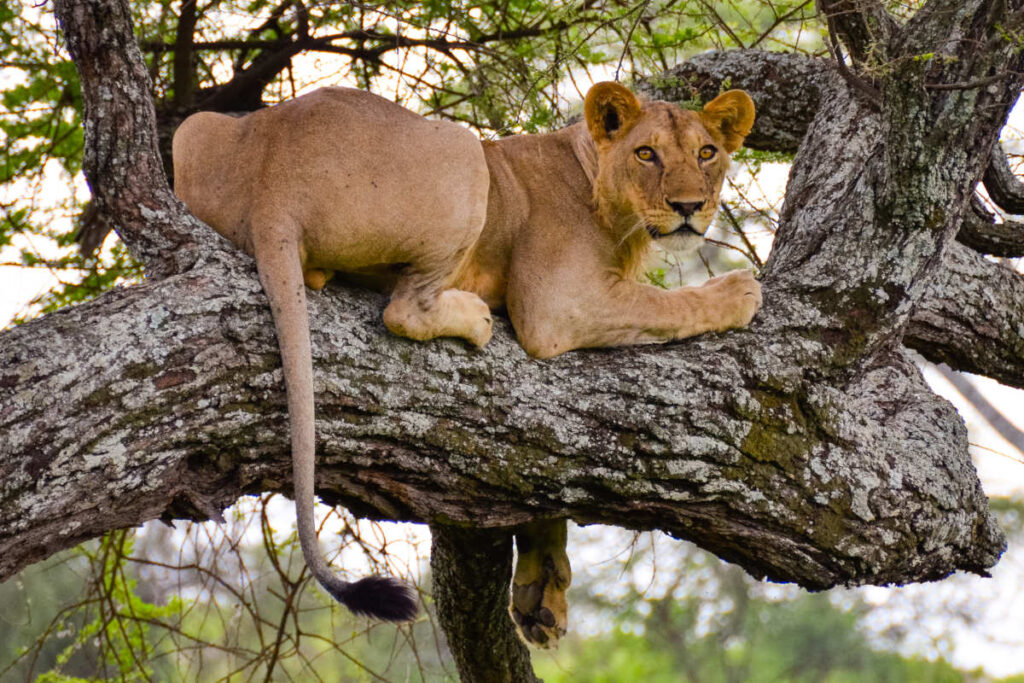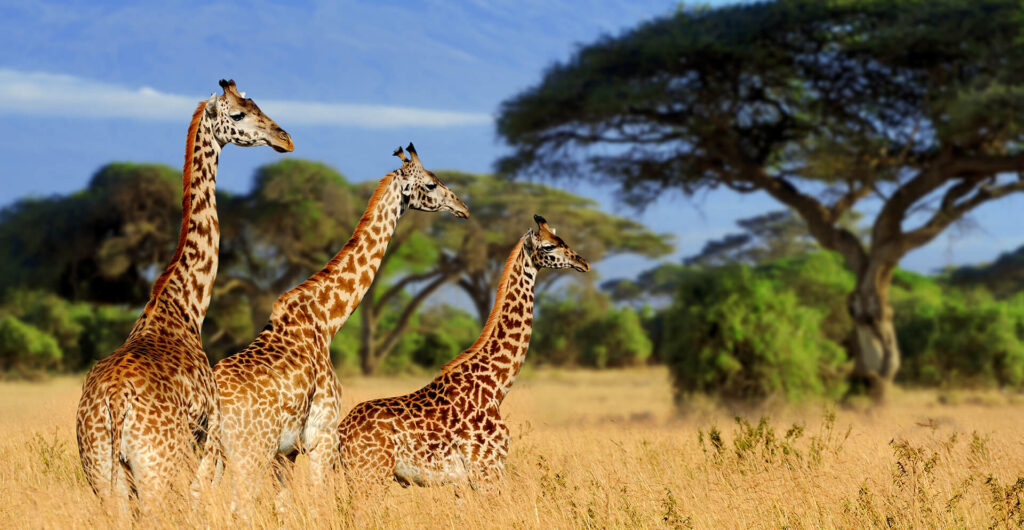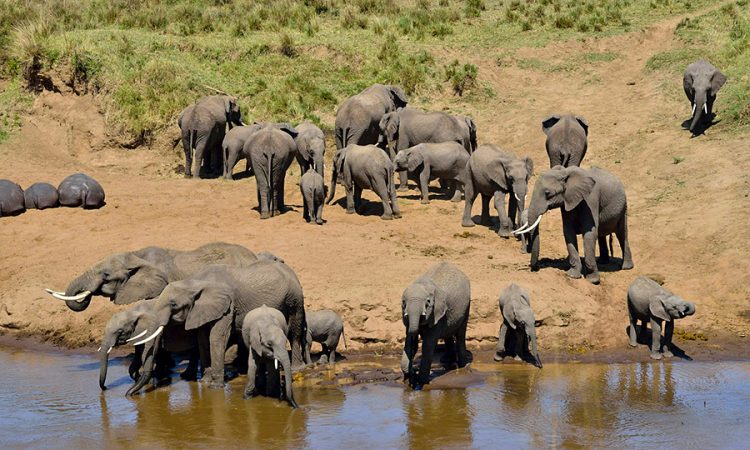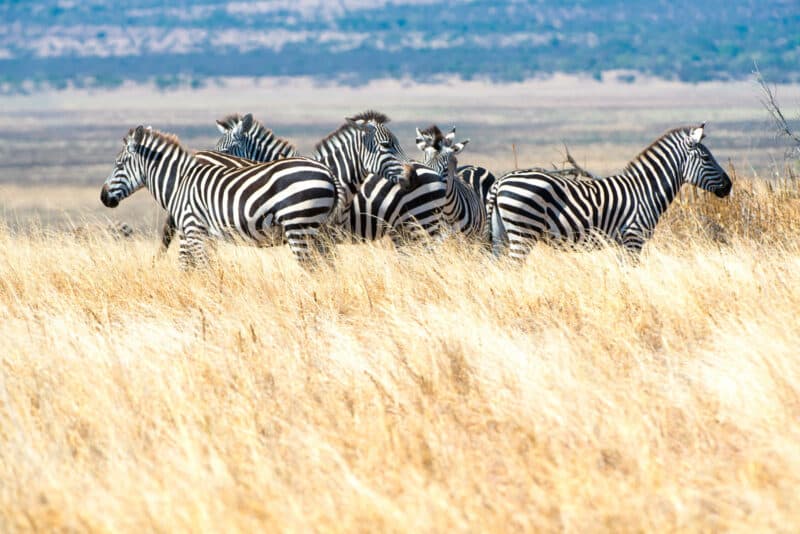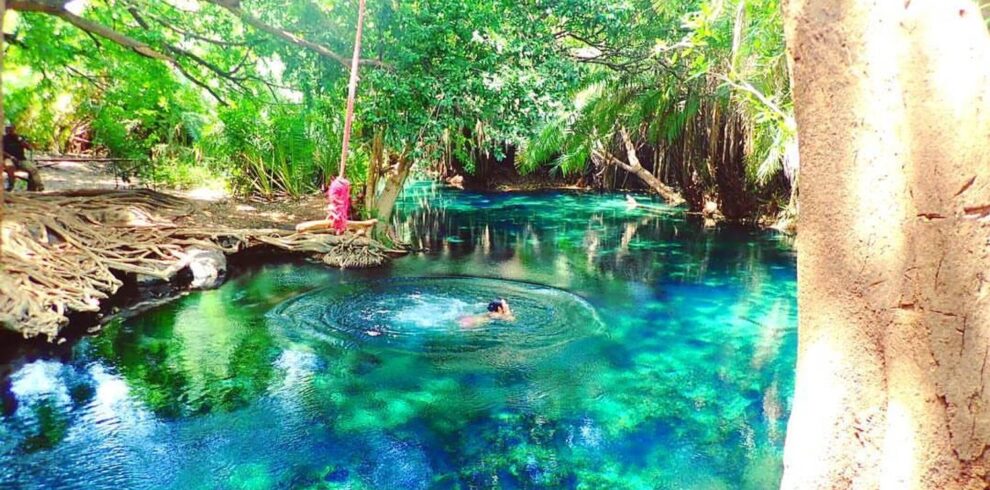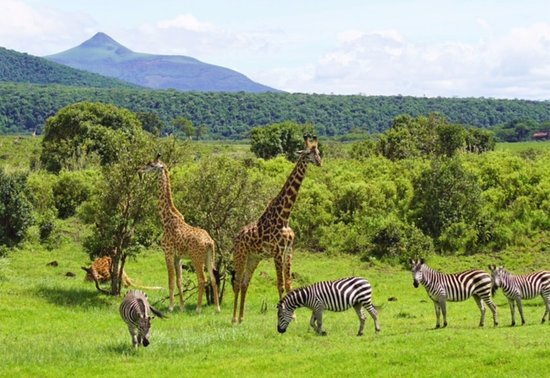Tarangire National Park, situated in Tanzania’s Manyara Region, spans approximately 2,850 square kilometers (1,100 square miles). The park features a varied landscape, including granitic ridges, river valleys, and swamps.
It is named after the Tarangire River, which serves as a vital water source for wildlife during the dry season. Established in 1970, it is the third-largest national park in Tanzania.
Why Visit Tarangire National Park?
Abundant Wildlife: The park boasts the largest elephant population in northern Tanzania, with herds reaching over 500 individuals. Besides elephants, it is home to zebras, giraffes, water buffalo, gerenuks, warthogs, lions, leopards, and hyenas. From June to October, the dry season offers prime wildlife viewing around the Tarangire River, the area’s sole permanent water source.
Bird Watching: With over 500 bird species, including regional endemics, Tarangire is a birdwatcher’s paradise. Notable species such as bateleur eagles, yellow-collared lovebirds, hornbills, Kori bustards, and lappet-faced vultures can be seen in various park habitats, including acacia glades and near the Tarangire River.
Scenic Beauty: The park’s diverse landscapes include woodlands, swamps, plains with anthills, and iconic baobab trees, creating a stunning African backdrop. The undulating savannah plains provide breathtaking views and numerous photography opportunities amid the park’s natural beauty.
Accessibility: Tarangire National Park is about 198 kilometers (approximately 3 hours and 28 minutes) from Moshi. It is an excellent destination to visit either before or after hiking Mount Kilimanjaro.

